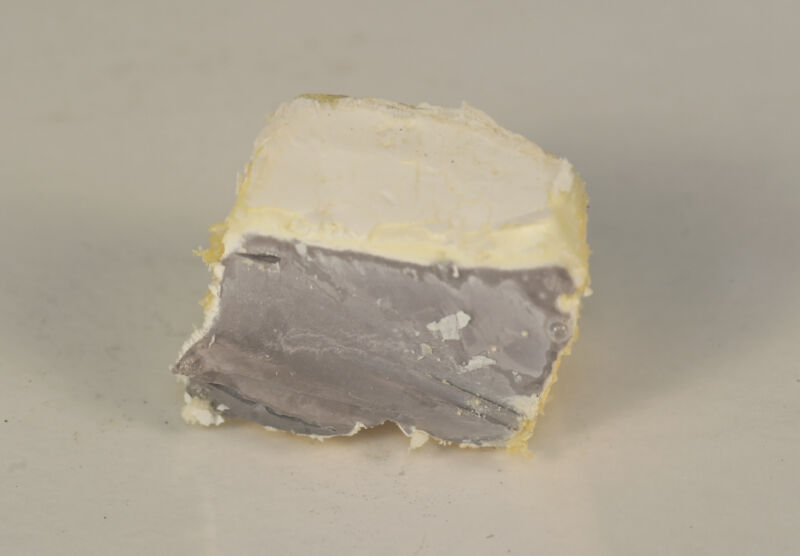Lithium-based batteries are great, with different electrode chemistries allowing them to be slotted into a variety of uses. The problem with them has nothing to do with their performance. The challenge we face is that we want to make a lot of batteries; if all of them use lithium, we're undoubtedly going to face supply crunches.
One potential solution to that is to simply replace lithium with a different ion. Alternative batteries may not be as good as lithium variants in all the different places we currently use them. They just have to be good enough at one task to take away some of the need to stick lithium everywhere.
That's the reasoning behind some interest in sodium-based batteries. Sodium is very plentiful and correspondingly cheap and can be made to behave a bit like lithium when used in a battery. But sodium batteries always carry risks associated with sodium's tendency to react explosively. But a recently developed solid electrolyte suggests that at least some of the challenges associated with sodium could be overcome.
An accidental electrolyte
There are a number of battery technologies that are based on sodium, like sodium-sulfur batteries, that have little in common with lithium batteries. But sodium-ion batteries work based on more or less the same principles as lithium-ion and can even use some of the same materials, like carbon-based electrodes. Sodium is heavier, so sodium-ion batteries can't really reach the same energy-per-weight levels that lithium can. But again, sodium is plentiful and cheap, so sodium batteries might make sense in cases where weight isn't critical, like home- and grid-level storage.
The big hang-up here is the sodium itself. Many lithium-based batteries use an aqueous electrolyte to get the ions between the two electrodes. And sodium is not noted for getting along well with water. In fact, it reacts energetically to release hydrogen, which then explodes. Fire hazards are problematic with the non-aqueous electrolytes in lithium batteries; add sodium's reactivity with the environment, and the hazards are severe.
So, the electrolyte appears to be a reasonable target for research. This is somewhat surprising because the research team seems to have stumbled across the electrolyte by accident. The researchers reference their work for the synthesis of the electrolyte and, if you chase that reference down, you'll find it's talking about an MRI contrast agent. It's not exactly clear how someone came up with the idea of trying it in batteries, but here we are.
The electrolyte itself is what's called a block copolymer. These are molecules that are built out of two different classes of subunits. The polymerization process is controlled in such a way that you end up with stretches of the polymer made of repeats of one subunit alternating with stretches composed of the other. (Those stretches are called blocks, giving the material its name.)
In this case, one of the two blocks was based on a carbon/sulfur compound; this polymer alone served as a control material. For the block copolymer, the second block was a hydrocarbon with most of the hydrogens swapped out for fluorine atoms. The idea behind the fluorine was to avoid a situation that occurred with related electrolytes, where the sodium ended up interacting with oxygens in the polymer and therefore getting stuck in it instead of moving through.
While the block copolymer is solid, it does undergo a transition from glass to plastic at temperatures that are likely to occur during battery operations. In either state, it tends to form distinct domains based on the two different blocks, with the fluorinated material creating internal channels that can accommodate sodium and the other blocks providing structural integrity.
How’s it work?
The researchers spend a lot of the paper simply cycling sodium into and out of the polymer and seeing what happens. This tended to create a layer of sodium on the surface of the material—a bit like electroplating it. It's important to note that the sodium formed a smooth surface on the polymer. On the control polymer, by contrast, dendrites of sodium with sharp edges formed. That's significant because dendrite formation is a major point of failure for lithium-ion batteries.
The key thing is that this process remained reversible; the plating of sodium on the polymer could be reversed and then plated again. Performance remained good for over 200 cycles of sodium in and out.
So, they went ahead and built two different batteries. For both batteries, one electrode was simply sodium metal (an approach that's being developed for lithium, as it'll greatly increase the charge per weight). The other electrode stored sodium in either a sodium-vanadium phosphate material or sodium iron phosphate. Both batteries worked. Performance dropped slightly as the charge/discharge current was boosted, but this didn't result in permanent damage to the polymer; dropping the current restored the previous performance.
But the main thing was the stability. After over 900 cycles, it still had over 97 percent of the battery's initial capacity.
None of which is to say that sodium batteries are guaranteed to be the next big thing. Any battery that involves a sodium metal electrode is going to involve some pretty significant engineering costs to maintain safety—engineering that might offset some of the cost savings of using sodium and weight savings of having a metal electrode. But the important thing is less about having mature technology now, so much as having a variety of battery chemistries under development by the time existing battery production scales to the point where lithium becomes a limiting factor.
Nature Materials, 2022. DOI: 10.1038/s41563-022-01296-0 (About DOIs).



3175x175(CURRENT).thumb.jpg.b05acc060982b36f5891ba728e6d953c.jpg)

Recommended Comments
There are no comments to display.
Join the conversation
You can post now and register later. If you have an account, sign in now to post with your account.
Note: Your post will require moderator approval before it will be visible.